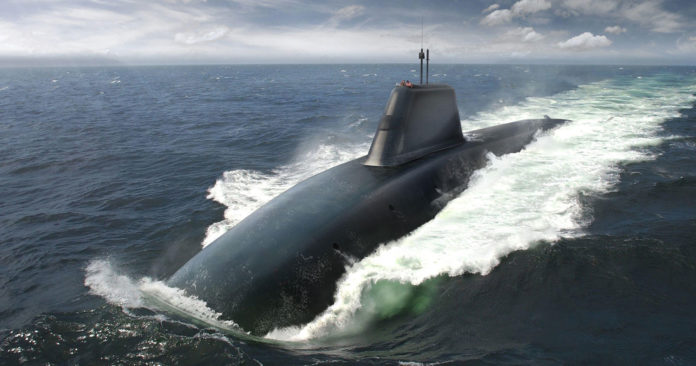BAE Systems revealed that the first of the Royal Navy’s Dreadnought-class nuclear missile submarines would be steered by the new control technology used in aircraft. The new approach involves adapting controls that are usually used in fly-by-wire aircraft and applying them in a marine environment.
The complete Active Vehicle Control Management (AVCM) system will monitor all important aspects of the submarines’ manoeuvering capability to the highest levels of safety and reliability, similar to existing systems on modern air transport platforms.
At first glance, the Typhoon fighter jet doesn’t have much in common with a 17,200-ton nuclear submarine armed with Trident missiles. Obviously, they are designed for different purposes and operate in vastly different environments. However, aircraft and submarines are very similar in one important aspect. Both, in a sense, fly – one operates in the air and the other underwater, but the way air and water flow over a vehicle are very similar in a surprising number of ways. In fact, many submarine hull designs are based on the aerodynamic principle of the airship, and the way the submarine control system works is quite similar to that of an aircraft.
Therefore, similar to how fly-by-wire works for aircraft, the company’s engineers are developing electronics that control the heading, pitch, depth, and buoyancy of the Dreadnought class, among other critical elements with added safety benefits.
“With over 50 years of avionics experience, we already have a great understanding of how to develop complex control systems for hi-tech platforms. However, taking our technology underwater brings exciting new challenges, and we are proud to support the Dreadnought program and play an important part in our national security effort,” said Jon Tucker, Director for Maritime Controls at BAE Systems Controls and Avionics.
Based on the Astute submarine, four Dreadnought-class submarines will replace the aging British Vanguard-class Trident submarine after 2030. Each of them will be powered by the Rolls-Royce PWR3 nuclear reactor and armed with a set of 12 US-built Trident D5 missiles.
